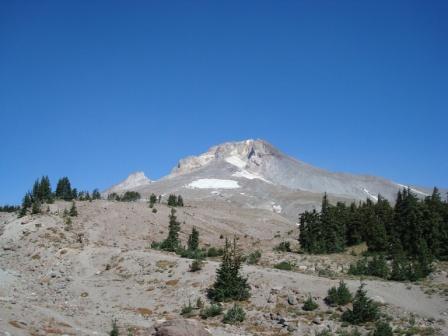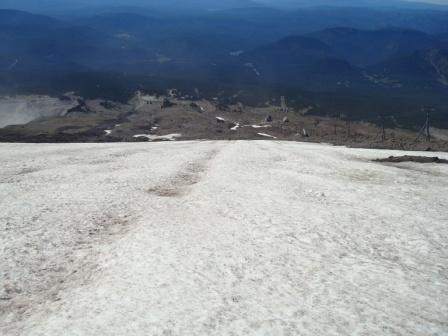September 26, 2009, Palmer Snowfield/Timberline
9/26/09
OR Mt Hood
3985
6
Perhaps not true backcountry, but the lifts weren't spinning so I'll throw it in here.
With September drawing to a close, turns were in order for this weekend, which found me in the Portland area for a friends Bachelor party.
After a goodnight's sleep at my folks house in Boring (and a delicious homecooked breakfast), I arrived at Timberline Lodge around 9:45.
Made it to the top of the Palmer a little before 11, and to my surprise the snow was actually pretty good. A little dirty, but not too bad, probably due to the grooming that took place a few weeks ago.
I lapped the upper snowfield twice, and then ripped down to within 200-300 vertical of the lodge. Over 2,500' of turns in September felt pretty good.
Go Dawgs!
B.
With September drawing to a close, turns were in order for this weekend, which found me in the Portland area for a friends Bachelor party.
After a goodnight's sleep at my folks house in Boring (and a delicious homecooked breakfast), I arrived at Timberline Lodge around 9:45.
Made it to the top of the Palmer a little before 11, and to my surprise the snow was actually pretty good. A little dirty, but not too bad, probably due to the grooming that took place a few weeks ago.
I lapped the upper snowfield twice, and then ripped down to within 200-300 vertical of the lodge. Over 2,500' of turns in September felt pretty good.
Go Dawgs!
B.


Nice !!!!!!!!!!!! Might have to head up that way............
- I find that snow field to be such a trip!!, just sittin there all by itself. In all reality, it should be called: Snow[man] field, because it is there due to the daily grooming, and salting
Do you think the salting will deplete the snowfield faster than if it sat by itself? Looks like it's getting smaller and smaller...
author=brownc9 link=topic=14085.msg59083#msg59083 date=1254245223]
Do you think the salting will deplete the snowfield faster than if it sat by itself? Looks like it's getting smaller and smaller...
Nope. They salt the snowfield to keep it from melting. Salt melts the top layer of the snowfield, which refreezes upon melting due to the very large, and cold, volume of snow and ice beneath it.
author=skier8484 link=topic=14085.msg59086#msg59086 date=1254250246]
Nope. They salt the snowfield to keep it from melting. Salt melts the top layer of the snowfield, which refreezes upon melting due to the very large, and cold, volume of snow and ice beneath it.
That area is used mostly by the race training concessionaires that train hundreds of racers each day during the summer. All ages.
They salt in the morning to harden the surface of the snow and generate icy conditions for the race skis. Sometime they might salt later in the morning if they think it will get them another hour or two in. Usually the race training is done by noon, because even with the salt the condition warm so much that the snow just gets too soft.
Salting actually dramatically lowers the snowpack temperature at the surface. This occurs at the expense of the snow in contact with the rock salt, which melts. The salt does melt the snow, in doing so creates a brine that has a melting temperature well below freezing which then chills and freezes the rest of the snow near the surface. The "warmed" brine then sinks through the snowpack and exits into the watershed. I knew someone who did the water testing in the area and she said there is most definitely elevated salt in the drainage in that area. If you listen to the operators they claim not so. What would you guess?
In any case, it is hard to believe that adding salt to the surface is actually preserving the snowfield. the use of salt is only to freeze the surface of the snow for that day's use and it does so at the expense of the heat of melting of the snow that the salt interacts with. A simple high school thermodynamic experiment that most people are familiar with when they make home churned ice cream.
Alan
For what its worth, the Palmer snow field was 163 feet thick at its deepest point, in the summer of 1981. It would be interesting to remeasure its depth today.
Reply to this TR
Please login first:
